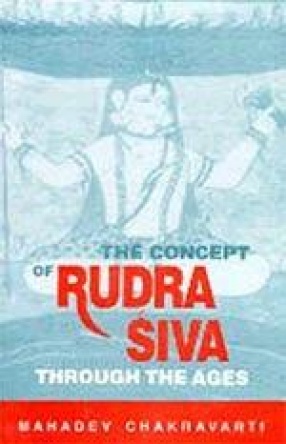Iconography of the Thousand Buddhas records their names in Sanskrit, Tibetan, Manchu, Mongolian and Chinese, in original scripts from a pentaglot xylograph whose microfilm was brought from Beijing by Prof. Dr. Raghu Vira in 1955, as well as in romanisation. These have been supplemented by Sanskrit names from a Khotanese scroll discovered by Sir Aurel Stein from the Tunhuang Caves. Prof. Raghu Vira obtained the Tibetan drawings of the Thousand Buddhas in the Bhadrakalpika-sutra xylographed at the Zho printery below the Potala Palace at Lhasa in Tibet. These drawings have been reproduced in the book for the first time. The recitation of a thousand names or epithets of a deity (nama-kirtana) is an ancient Indian tradition: an awareness of the perennial possibilities of the spiritual horizon. Here the illumined mind is thousand-folded into ever higher intuition of the infinity of the transcendent universal. In India a special literary genre was devoted to the thousand names, or rather epithets, of a divinity. The thousand names of Visnu are well known as the Visnu-sahasra-name. The thousand epithets of the Buddha underwent an apotheosis as the Thousand Buddhas and they became a thousand pictures or a thousand icons, in variations of fives or sixes. Their statuettes were done in the 18th century at the behest of Ch'ien-lung for his mother. The earliest mention of the Thousand Buddhas is in the Brahmajala-sutra which was translated into Chinese in AD 223-253. They are mentioned in the Tathagat-acintya-guhya-nirdesa translated by Dharmaraksa in AD 280, and also in the Lotus Sutra whose translator is also Dharmaraksa (AD 286), in the Bhadrakalpika-sutra, Gandavyuha of the Avatamsaka rendered by Buddhabhadra in AD 422. The introduction to the work gives a history of the important texts in Sanskrit, Chinese and Tibetan relating to the Thousand Buddhas. The vast complex of Tunhuang Caves was inspired by this concept which was elaborated in the Bhadrakalpika-sutra. This sutra was translated into Chinese by the Yueh-chih monk of Tun-huang Dharmaraksa. Again Tunhuang has yielded the Khotanese scroll of this sutra whose lines 199-754 contain salutations to the Thousand Buddhas. The Thousand Buddhas were integral to the Avatamsaka school. The central Buddha of this school was Rocana or Abhyuccadeva 'The Colossal Divinity'. He was configured in the Yun-kang and Tun-huang caves of China, in Korea and Japan as a sanctification of the state. The most well-known colossus in the Roshana Daibutsu (Rocana) at the Toshodaiji monastery in Nara. The Liang translation of the Trikalpika-sutra enumerates the Thousand Buddhas of the past, present and future. They were venerated by the founder of the Liang dynasty and succeeding emperors. The Bamiyan colossi with their miniature Thousand Buddhas inspired monumental caves in China. The first chapel of Tun-huang was constructed by an Indian pilgrim-monk Lo-ts'un (Lachman/Laksmana) in AD 366 and named the 'Caves of Unequalled Height' (Chinese Mo kao k'u). The prevalence of the Thousand Buddhas in Tun-huang paintings from the earliest caves may be due to the legend of Lo-ts'un who opened the first cave after having seen the Thousand Buddhas in golden radiance. Thousand Buddhas are painted in cave CDXXVII of the Sui period (AD 589-618) when the founder of the dynasty reunited the north and south of China. The sutra on the Thousand Buddhas was translated by a native of the place, the 'Bodhisattva of Tun-huang', naturally it could have provided the inspiration.
Iconography of the Thousand Buddhas
In stock
Free & Quick Delivery Worldwide
reviews
Bibliographic information
Title
Iconography of the Thousand Buddhas
Author
Edition
1st. Ed.
Publisher
ISBN
8186471081
Length
vi+437, 1072 Illus. Index.
Subjects








There are no reviews yet.